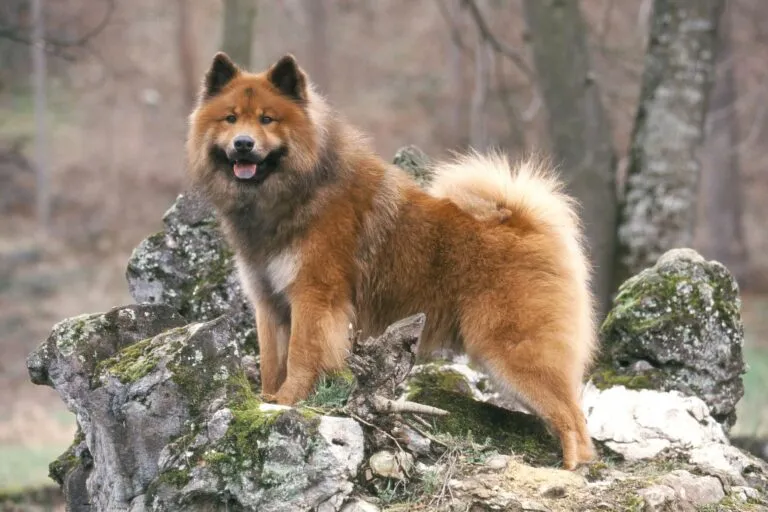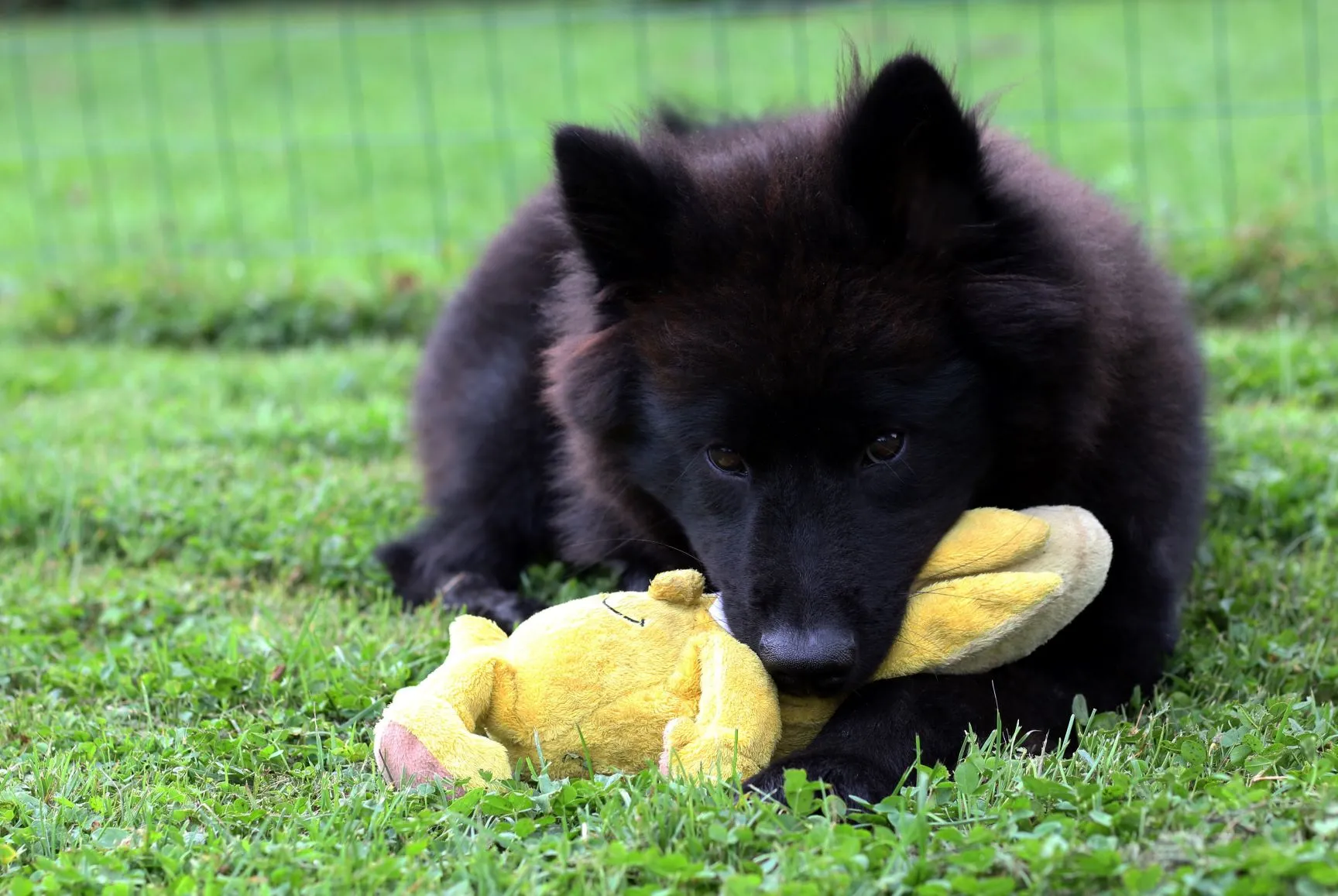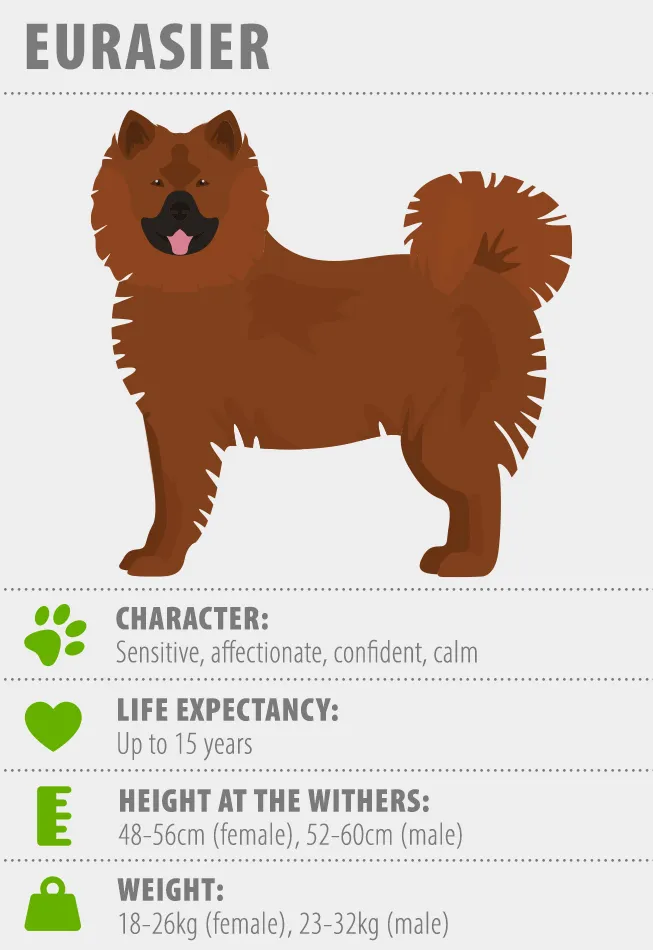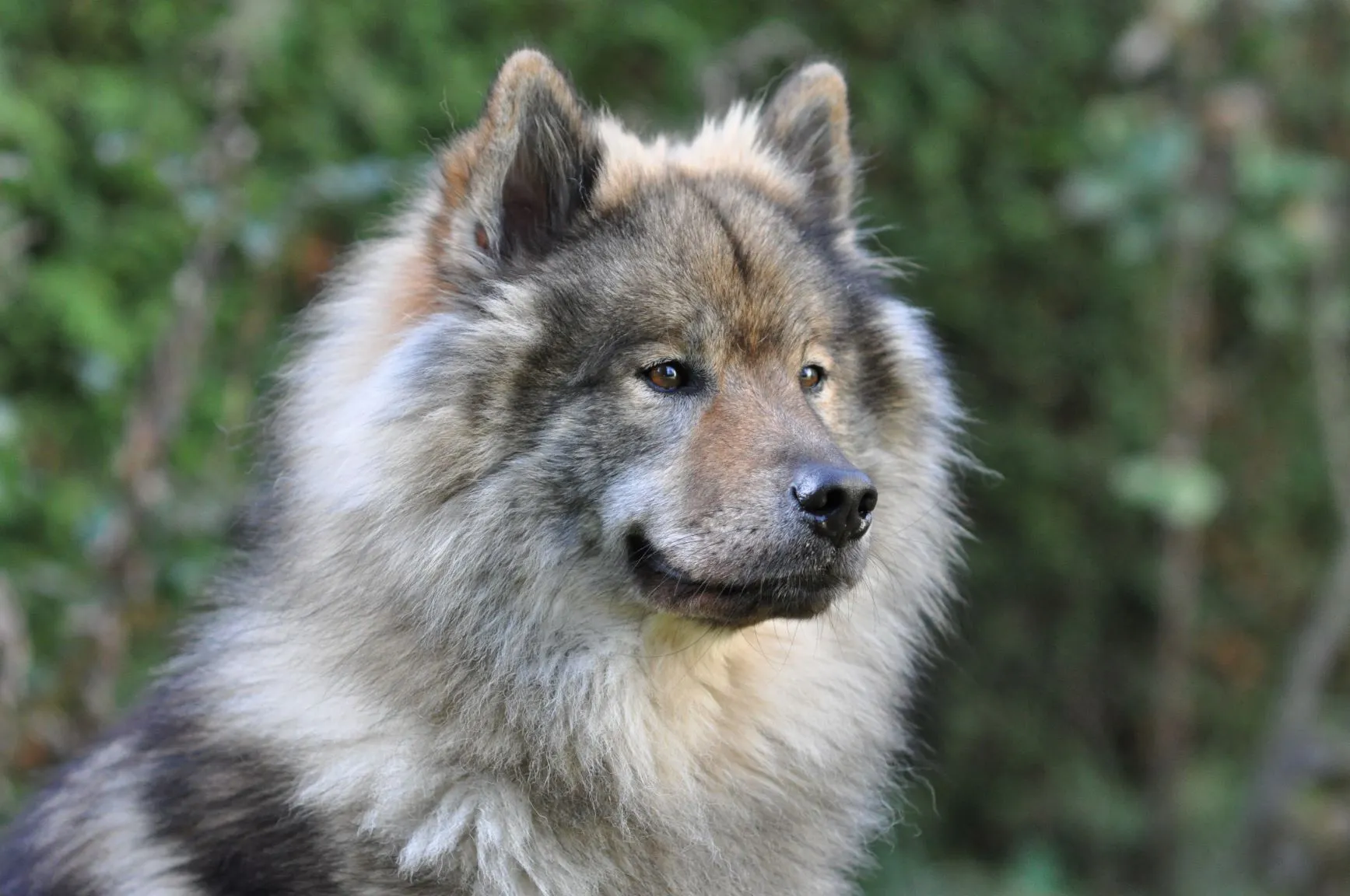Beagle
The Beagle's short legs can be deceiving – this medium-sized dog keeps you on your toes and is always full of surprises! This friendly breed is active, fearless and extremely clever.
The Eurasier is the youngest German dog breed. Those who become better acquainted with these medium-sized dogs won't just admire their abundant coat, but also learn to appreciate their special nature.

© CALLALLOO CANDCY
The attractive Eurasier emerged from the combination of the Chow Chow, Keeshond and Samoyed.
The Eurasier’s origin is obvious: It resembles a Spitz hybrid. The pointy ears and tail curved over the back are typical features. It also has a medium to heavy build, with the rump slightly longer in length than the shoulder height. This makes it a medium to large dog breed .
 © Wildcat
© Wildcat
The name Eurasier comes from the two continents from which the original breeds that make up these special dogs originate. Hence, they should combine the reserve of the Asian Chow Chow with the friendliness of the Samoyed (also from Asia) and affability of the European Keeshond.
The objective of breeding was to produce an affable family companion dog. The Eurasier isn’t without its complications though, because it has a strong personality and is stubborn. As a result, it isn’t necessarily suitable for first-time owners.
The Eurasier attentively guards its territory but doesn’t tend to yap . Some dogs from this breed also have a strong hunting instinct, whilst others are straightforward in this respect.
What also makes this dog breed particularly special is its fine sense for human moods. Eurasiers are very sensitive and form a close bond with their owner.
On the other hand, they are distanced towards strangers. This is the case both with humans and with other dogs. Males in particular tend not to tolerate any fellow canines in their own territory. However, a well-trained Eurasier is a calm and pleasant companion.
These self-confident companions need clear leadership, because some Eurasiers are prone to simply ignoring demands. However, you can teach the Eurasier basic obedience with consistency and patience.
Attending a puppy school and group for young dogs can be very helpful with this. With sufficient socialization during the puppy phase, adult Eurasiers stay more relaxed when they encounter fellow canines. You should factor in some time for anti-hunt training with the few Eurasiers that are fund of hunting.
 © zooplus
© zooplus
What demands do these four-legged friends with abundant coats pose in terms of grooming? And what should interested parties pay attention to before a Eurasier enters their home?
Although the fur looks abundant, it is generally low-maintenance. Nevertheless, you should thoroughly brush your pet at least once a week. This should be done more frequently during the moulting period. This doesn’t just prevent little knots from matting in the fur, but also excess dog hair in your home.
In contrast, you shouldn’t shear or trim your dog’s fur. The abundant coat acts like an air conditioner and protects both from the heat and the cold. Shearing would destroy the texture of the fur.
In order to make the warm seasons more bearable for your dog , you can generously comb out its undercoat. If in doubt, ask experienced owners or your trusted dog groomer for advice.
The Eurasier fits well both with families and singletons. It’s helpful if you have prior experience with dogs and like to do a lot with your canine friend.
The Eurasier will feel at ease in a spacious city apartment, but it does also need plenty of outdoor exercise. However, it won’t demand any major sporting endeavors on your behalf.
This dog breed gets on well with children. As with all family dogs, however, small children should never be left unsupervised with them. Also teach them to be respectful and always give the dog sufficient opportunities to retreat.
If there are already cats living in your home, the Eurasier can usually adapt well to felines. This is even easier if it has already been able to encounter them with the breeder.
You should consider when planning holidays that this dog breed forms a close bond with its owners. So how about a hiking holiday in temperate climates, for instance?
 © redsnakeskin
© redsnakeskin
The Eurasier likes spending time with its family. It needs and appreciates long daily walks in the great outdoors whatever the weather. In addition, this breed is suited to types of dog sports that are less dependent on speed and blind obedience.
Tracking work like man-trailing is ideal. The dog learns to concentrate, whilst it can act on its need to put its nose to the test. Make sure that your Eurasier doesn’t train close to game tracks.
With clicker training, you can also make your dog happy, tire it out and strengthen your bond.
Responsible Eurasier breeders set great store by the health of the breed. This means that they get the parent animals tested for hip and elbow dysplasia before deploying them for breeding. Dogs with epilepsy, entropion, luxating patella, malpositioned teeth or shortened tails are not deployed either.
Apart from the danger of a high level of inbreeding, which scrupulous Eurasier breeders can control, Eurasiers are in principle a robust breed. Make sure your Eurasier maintains a healthy weight, does sufficient exercise and receives a high-quality dog food . This way, it can reach up to 15 years of age.
Find out everything about feeding in our Dog Food section .
Breeding started with the invention of a ‘Keeschow’. Find out here what the renowned ethologist Konrad Lorenz had to do with this and where Eurasier breeding stands today.
Eurasier breeding started in the 1960s, more precisely in the small town Weinheim in Baden-Württemberg. Julius Wipfel wanted to combine the characteristics of a straightforward Keeshond with those of the Chow Chow, a more primal dog. This resulted in the Keeschow.
This idea was very much to the taste of Konrad Lorenz, who had worked with German Shepherd/Chow Chow hybrids. He distinguished between utility dogs that subordinate to people and headstrong Nordic-type dogs. His ideal was to combine the benefits of both types.
This was also the goal of the new Keeschow breeder: In 1972, Lorenz adopted the Keeschow female Babette (Nanette vom Jägerhof) and later became an honorary member of the Eurasier breeding community, which still exists to this day.
But it wasn’t just the Keeschow: Samoyeds were also paired in 1972. One year later, the Eurasier was recognised as a new independent dog breed by the FCI and the German VDH.
In the spirit of the founder, reputable breeders focus on planned Eurasier breeding. This means that interested parties register with a Eurasier association.
The association in question then finds a home for the puppy, whereby colour and gender preferences can be taken into account. All associated breeders only breed as many dogs as there are interested parties.
The Weinheim Eurasier Club (Eurasier Klub Sitz Weinheim, EKW) was initiated by Julius Wipfel, the founder. A puppy homed by this association costs 1,500 euros. The Eurasier breeding community also offers a central puppy placement service.
The Eurasier Cynological Breeding Community (Kynologische Zuchtgemeinschaft Eurasier, KZG) is a further port of call. These three associations are affiliated with the VDH and FCI and occasionally rehome animals in need. Additionally, the Swiss Eurasier Club is the right port of call for Switzerland and the Eurasier Club Austria for Austria.
There are more associations in German-speaking countries, although none are affiliated with the FCI. If you want an original Eurasier, you should solely contact one of the named associations.
Eurasiers have many of their ancestors’ characteristics. As a result, interested dog lovers can often be keen on the Keeshond or Samoyed too. On the other hand, the Chow Chow is more headstrong in terms of behaviour and requires more grooming too.
Registered as a brand, the Elo is a mix of Old English Sheepdog, Chow Chow and Eurasier, although it is not recognised as a breed by either the VDH or the FCI.
What started as the project of a few dog lovers has long since established itself as a dog breed with many fans. Controlled planned Eurasier breeding is just as much a peculiarity of this appealing breed as its sensitive stubbornness. The Eurasier is a dog for current and wannabe experts!
The Beagle's short legs can be deceiving – this medium-sized dog keeps you on your toes and is always full of surprises! This friendly breed is active, fearless and extremely clever.
The Golden Retriever is still one of the most popular dog breeds, especially with families. It is defined not just by its docility, but shows numerous other qualities too. Read in the following article everything you need to know about the Golden Retriever.
The German Shepherd is one of the most popular utility dog breeds in the world, though the willing-to-learn and people-focused nature of these versatile dogs also makes them suitable for family life.